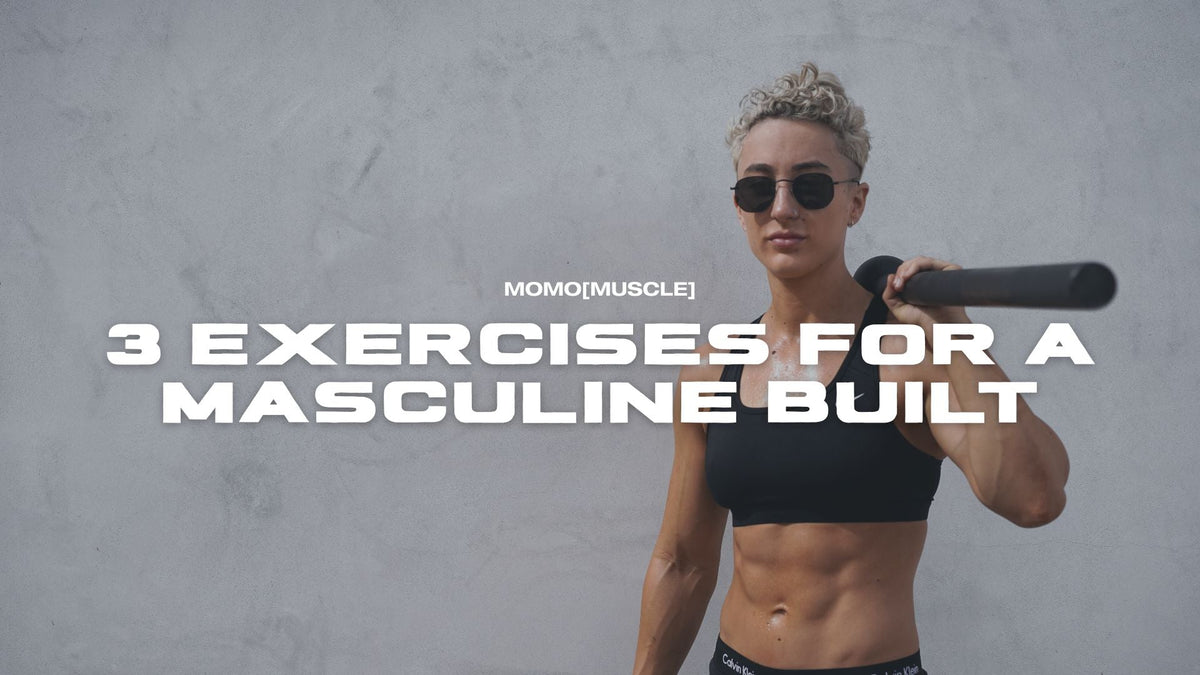
Top 3 Exercises That Help You Achieve That Masculine Built
|
Time to read 3 min
|
Time to read 3 min
Let’s be real:
If you’ve ever walked into the gym, did two shoulder circles, stared at the dumbbells, and thought…
“Wait… what am I training today again?”
If you’ve ever opened your Notes app mid-set like it holds the secret on how to build muscle...
If you’ve trained five days in a row and your body still feels like, “Yeah… cute, but no thanks”—
Welcome. You’re in the right place.
If you’ve ever blamed your lack of progress on “not trying hard enough,” I’m here to lovingly shake you by the shoulders and tell you to stop.
Trying harder isn’t the flex. Trying smarter is.
And the good news? Smarter doesn’t mean more complicated.
It just means doing the right stuff—on purpose—with enough consistency to let your body catch on.
That’s what we’re doing here.
The internet will tell you that the answer is always more:
More reps. More workouts. More equipment. More split routines named after days of the week and Greek gods.
But if you’re overwhelmed, plateaued, or just tired of Googling “best exercises to tone my [insert body part]”—let me offer you something better:
Fewer lifts. Better results. More sanity.
In The Fighter Program, we use a 3-lift foundation that builds strength, shape, and confidence—without the chaos. It’s efficient, joint-friendly, and actually works for bodies that get sore, tired, and still have to sit at a desk most of the day.
Let’s break it down.
RDLs are like the thoughtful, responsible cousin of the conventional deadlift. Not as flashy. Way more reliable.
This lift targets your hamstrings, glutes, and lower back , which also happens to be the antidote to long desk hours, tight hips, and flat-leg syndrome.
RDLs train your posterior chain—aka the muscles that hold you upright, stabilize your spine, and help you move through life without wincing every time you tie your shoes.
Plus, they build tension. And in the gym, tension = growth.
Soften your knees, hinge at your hips, and imagine you're closing a car door with your butt while holding groceries. That’s the motion. That’s the vibe.
RDLs also happen to be one of the few exercises that make you stronger and improve your posture without looking like you’re trying too hard. Which, let’s be honest, is a win.
Look, push-ups are fine. But if your back isn’t in the conversation, your “upper body gains” are a little one-sided.
Bent-over rows are the unsung heroes of muscle balance, posture improvement, and finally looking like you lift—especially from the back. They hit your lats, rear delts, traps, and arms all in one go.
Pulling movements are essential—not optional.
They open up your chest, strengthen your posture, and build that “I train” shape through your back and arms.
Flat back, proud chest, elbows lead. Pull like you’re starting a lawnmower… but make it upper-body day.
Bent-over rows also help with slouchy shoulders and desk-back. If you text like a gremlin [I do], this one’s for you.
Squats are great.
But if your glutes aren’t actually firing, all that quad work just makes stairs harder—not your butt stronger.
Glute bridges are simple, low-drama, high-return. And they fix a lot: weak hips, unstable knees, overcompensating backs, and missing glute gains.
Your glutes are supposed to be the MVPs of your lower body. When they’re not pulling their weight, other muscles overwork, your lifts suffer, and your posture gets weird.
Feet flat, heels under knees, ribs down, squeeze like you’re trying to hold a winning lottery ticket between your cheeks. [Too visual? Good.]
Bridges are also beginner-friendly, PT-approved, and one of the fastest ways to actually feel your glutes working—instead of just hoping they show up.
Because they’re:
Simple enough to remember
Smart enough to scale
Effective enough to actually matter
These lifts are the backbone of The Fighter Program because they train your body to move better, feel stronger, and look more powerful—without demanding your entire personality revolve around gym life.
Whether you’re just starting out, burned out, or stuck in “maybe I’ll train tomorrow” land—this formula gives you structure without pressure.
And let’s be real: it’s hard to second-guess your workout when it’s just three lifts you know work.
You don’t need to do everything.
You just need to do the right things—on repeat.
The 3-lift formula is a foundation that works, whether you’re brand new to strength training or just tired of jumping from workout to workout without seeing progress.
Want a program that maps it all out for you—reps, sets, video demos, and meals included?
Let’s get started.



